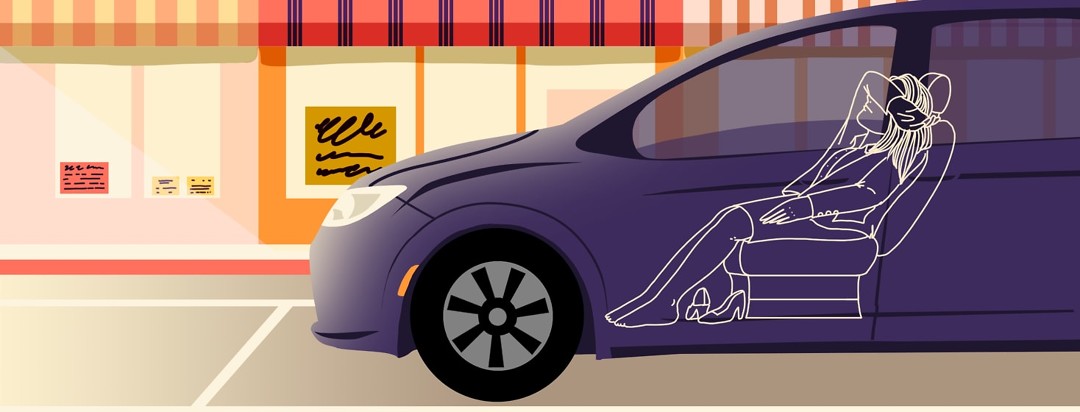Driving Me Nuts: Strategies for Managing RLS in a Car
I recently returned from a short mid-week break. It was most delightful – filled with penguins, lighthouses and wine. What’s not to like?
The driving restlessness is not likeable.
In order to go away for a delightful break, I have to get there. And that involves some sort of transportation – in this case, a car. Just thinking about having to travel in a vehicle induces an anxiety response – increased heart rate, shallow breathing, messy headspace and a nervous jiggle.
The dreaded passenger seat
If I’m driving I usually find the restlessness is negligible and manageable. But when I’m the passenger, things change.
The cramped space guarantees an increase in restless legs syndrome (RLS) symptoms – twitches, cramps and creepy-crawly skin sensations. It’s unpleasant at the best of times, but in a confined space the fidgeting escalates.
When you have RLS, cars are nasty things with poky spaces and no wriggle room. You’re strapped in with a seatbelt with absolutely nowhere to move. Even the most comfortable of seats feel uncomfortable. You know what I mean, right?
Travelling to a wine-sipping, penguin viewing holiday means enduring this for 3 hours. And endure it I did.
Preparing my space for the long trip
Start with the basics – comfort.
- I wear comfortable pants
- My seat is pushed back as far as possible
- The seatbelt is moved into the most discrete position available
- Everything is cleared away from my feet and put into the back seat
- I remove my shoes
- The aircon is turned to 21C (70F)
- My favourite playlist is playing along – loudly
- My husband is encouraged to talk to me
- I have water nearby
- I keep a pillow handy
- I take a tennis ball
Somehow, knowing the space is as comfortable as can be, reduces anxiety and lets the restlessness settle.
Once settled in and girding my loins for the journey I take a deep breath and hope for the best. Preparation usually gives me a good half hour before the discomfort begins. That’s one-sixth of the trip.
Stretching and moving at the first signs
It’s important to get on top of restlessness the moment it begins, rather than waiting until it’s unbearable.
With enough legroom, stretching is my best option. Even though I’m hypermobile, I find a way.
- Pushing my legs out as straight as possible then pointing and flexing my foot, stretches my calves
- Reaching one arm behind the seat then turning the opposite way stretches my chest and shoulder
- Slowly turning my head from side to side and holding gives a nice neck stretch – and makes my husband think I’m staring at him
- Squeezing my butt cheeks as hard as I can, one at a time releases tension
- So does putting the tennis ball under my butt cheek as a pressure point
- Rolling the tennis ball under my feet gives a foot massage
- Putting the tennis ball between my shoulder blades, against my hip, or anywhere that’s possible in a car, releases tension and helps the restlessness
- Flutter kicks with my feet help everywhere
Stretching, twisting, and turning make such a difference. I can fill in a good 15 minutes with all of that. Then I might sing along to the playlist, engage my husband in conversation, wriggle my way into a comfy position with my pillow or have a good swig of water.
My journeys require planning
The last strategies I use are about the journey itself.
- I stop every hour or so for a stretch and if I’m feeling decadent, a bakery treat
- I make sure my bladder is empty because needing to go to the bathroom escalates restlessness. And anxiety.
- I don’t travel more than 3 hours without having a major pit stop – i.e. a 1-hour break
- I try not to travel in small cars
- I prefer not to travel with large groups of people. My husband knows my issues and if I’m stamping my foot like a toddler having a tantrum, he knows to just ignore it
For me, that is enough to keep me fairly settled for a while. And then the routine begins again.
Focusing on the destination
I love travelling. I really do. My most recent trip was a prize from a travel writing competition. It was fantastic. But travel always requires transportation so a comfortable trip for me and my travelling companions requires managing my symptoms.
When all else fails, or longer journeys are a necessity, I have medication that works a treat. But personally, I don’t like taking it during the day. I use all my strategies and focus my energies on the destination, not the journey. Sometimes it drives me nuts. But once I get there, it’s always worth it.
How do you manage your RLS in the car or when traveling? Share your story with the RLS community in the comments below.

Join the conversation